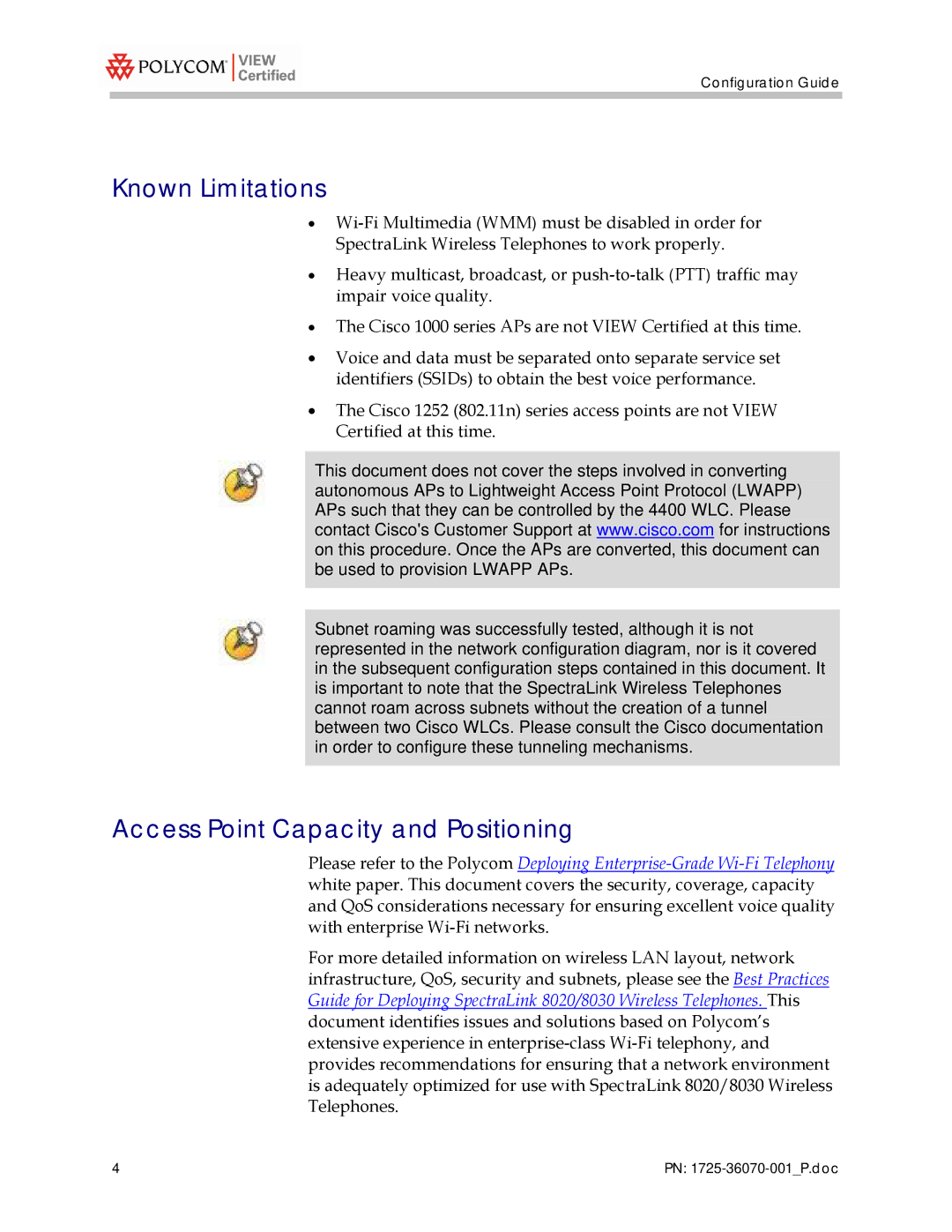
Configuration Guide
Known Limitations
•
•Heavy multicast, broadcast, or
•The Cisco 1000 series APs are not VIEW Certified at this time.
•Voice and data must be separated onto separate service set identifiers (SSIDs) to obtain the best voice performance.
•The Cisco 1252 (802.11n) series access points are not VIEW Certified at this time.
This document does not cover the steps involved in converting autonomous APs to Lightweight Access Point Protocol (LWAPP) APs such that they can be controlled by the 4400 WLC. Please contact Cisco's Customer Support at www.cisco.com for instructions on this procedure. Once the APs are converted, this document can be used to provision LWAPP APs.
Subnet roaming was successfully tested, although it is not represented in the network configuration diagram, nor is it covered in the subsequent configuration steps contained in this document. It is important to note that the SpectraLink Wireless Telephones cannot roam across subnets without the creation of a tunnel between two Cisco WLCs. Please consult the Cisco documentation in order to configure these tunneling mechanisms.
Access Point Capacity and Positioning
Please refer to the Polycom Deploying
For more detailed information on wireless LAN layout, network infrastructure, QoS, security and subnets, please see the Best Practices Guide for Deploying SpectraLink 8020/8030 Wireless Telephones. This document identifies issues and solutions based on Polycom’s extensive experience in
4 | PN: |
